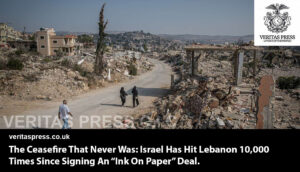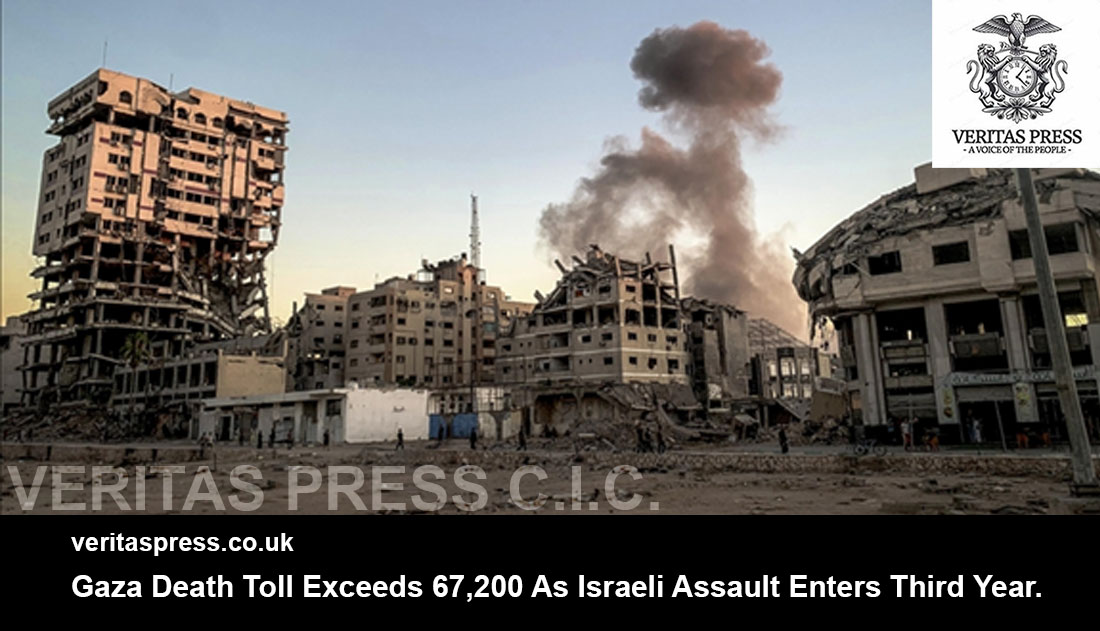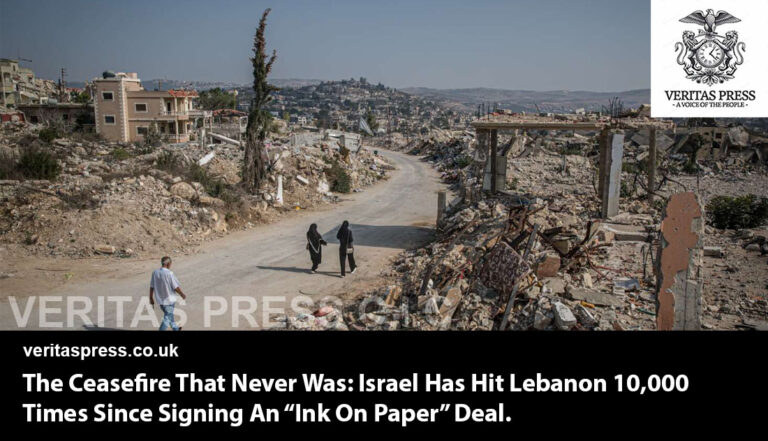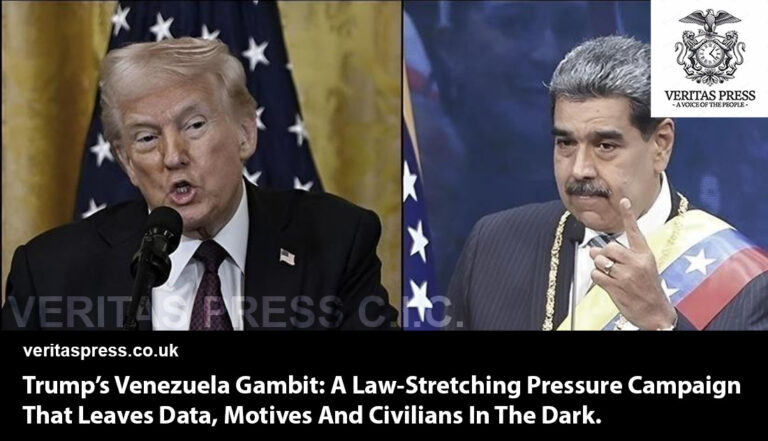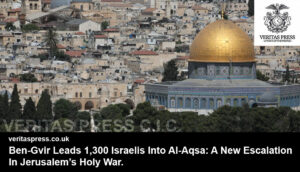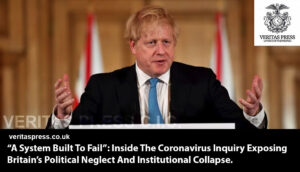Press Release: Veritas Press C.I.C.
Author: Kamran Faqir
Article Date Published: 08 Oct 2025 at 16:02 GMT
Category: Middle East | Palestine-Gaza-West Bank | US-Israel At War
Source(s): Veritas Press C.I.C. | Multi News Agencies

Business Ads
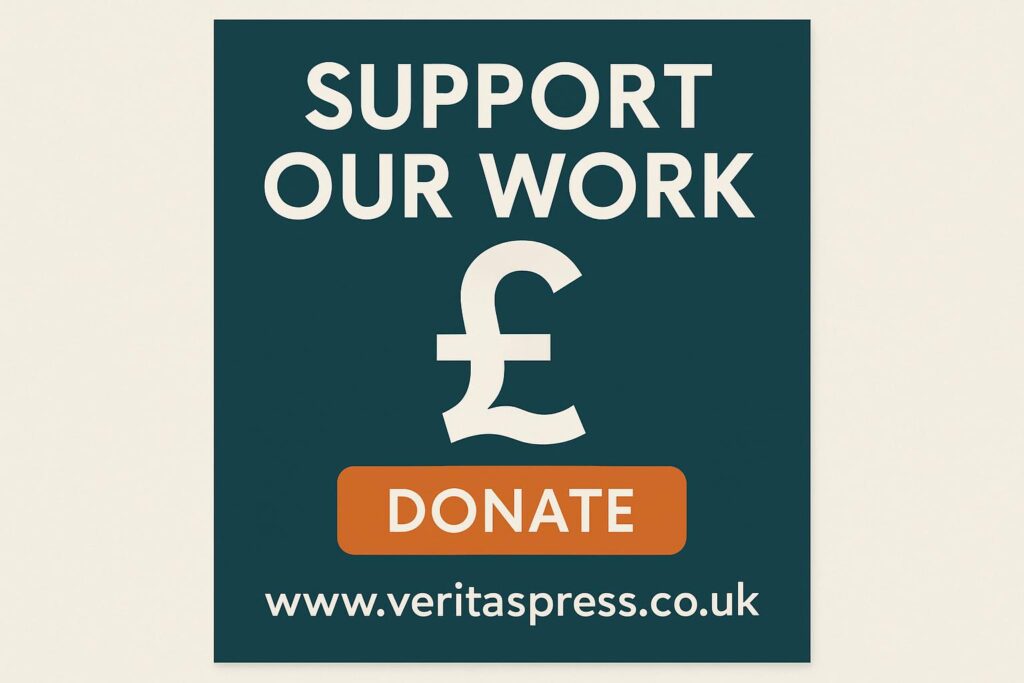

As the war in Gaza passes its second anniversary, the human toll and humanitarian catastrophe have reached staggering proportions. Palestinian authorities report that over 67,183 people have been killed and approximately 377,000 wounded and maimed in the enclave since October 2023. In the past 24 hours alone, 10 people were killed and 61 were injured, according to the Gaza Health Ministry. Many more remain trapped under debris or unreachable by rescue teams.
This mounting death toll arrives amid renewed Israeli bombardment, ongoing ceasefire talks in Egypt, and increasing calls for accountability, including allegations of genocide. The conflict’s trajectory has laid bare the limits of international diplomacy, humanitarian intervention, and the global commitment to human rights.
Escalation & Latest Casualty Figures:
Daily Toll And Underreported Losses
In its latest update, the Gaza Health Ministry stated:
- Ten bodies were brought into hospitals in the past 24 hours, while 61 people were injured.
- Eleven people were shot while attempting to access humanitarian aid points.
- Total casualties since the war began now exceed 67,183 dead and 377,000 wounded or maimed.
- Over 2,613 people have died, and more than 20,000 have been wounded, while seeking assistance since May 27.
- Many victims, civilians, men, women, and children, remain buried under rubble or in areas inaccessible to rescue teams.
These figures align broadly with independent reporting. Reuters, for example, notes that over 67,000 Palestinians have perished in Israel’s air and ground offensive, and stresses that thousands more are likely unaccounted for under rubble.
However, even these tallies are almost certainly underestimates. As Reuters cautions, “the true number may be much higher, as thousands of bodies remain unaccounted for under rubble.” The Gaza Health Ministry itself acknowledges the difficulty of comprehensive damage assessment in such conditions.
Renewed Bombardments, No Respite:
Israel’s military resumed attacks on Gaza on March 18, 2025, abruptly ending a fragile ceasefire and prisoner exchange arrangement from January. Since then, at least 13,588 Palestinians have been killed and 57,800 injured in these renewed strikes. Additionally, over 11,000 Palestinians are still in Israeli prisons, without a trial or with fabricated accusations.
In the last 24 hours alone, local media reports eight people killed, including three in “humanitarian zones” in al-Mawasi (southern Gaza), an area where thousands from northern Gaza have sought refuge.
Heavy shelling was reported across Gaza City, especially in Tal al-Hawa and al-Nasr neighbourhoods. In Sabra, west of Gaza City, explosive-laden vehicles were detonated, and residential buildings were struck.
The Gaza enclave, already destabilised and stripped of resources, continues to endure relentless bombardment even as mediators in Egypt pursue a ceasefire.
The Two-Year Anniversary: Catastrophe Deepens.
As the conflict crosses its second anniversary, the scale of devastation is apparent everywhere:
- Over 90% of Gaza’s infrastructure is now damaged or destroyed: homes, schools, mosques, hospitals, and public utilities.
- Of the 36 hospitals in Gaza before October 2023, only 13 remain partially functional.
- Over 1,700 medical personnel have been killed.
- An estimated 20,000+ children are among the dead.
- At least 9,500 people are missing. Many are presumed buried under rubble.
- 77 prisoners have died in Israeli custody during the conflict; many more remain forcibly disappeared. Over 11,100 Palestinians are currently held in Israeli prisons or camps (excluding detainees in field military custody).
To mark October 7, local media reported fresh air strikes on Gaza City and Khan Younis zones, alongside mass displacement and intensified military activity.
In Israel, national memorials were held for victims of the October 7, 2023, attack, in which approximately 1,180 Israelis died. Since then, over 700 additional Israelis have perished in conflicts with Gaza, Lebanon and Iran.
The Gaza Health Ministry framed the war not as a “humanitarian crisis” but as the deliberate collapse of Gaza’s healthcare infrastructure and the machinery of life itself.
According to Gaza’s Government Media Office, over 200,000 tonnes of bombs have been dropped on Gaza.
Legal Reckoning And Claims Of Genocide:
With each passing month, the calls for accountability intensify:
- In November 2024, the International Criminal Court (ICC) issued arrest warrants for Israeli Prime Minister Benjamin Netanyahu and former Defence Minister Yoav Gallant for alleged war crimes and crimes against humanity in Gaza.
- Israel is also facing a genocide case at the International Court of Justice (ICJ), brought by South Africa, which accuses Israel of systematically targeting civilians, imposing collective punishment, and starving Gaza into submission.
- A UN Commission of Inquiry has also declared that Israel’s conduct in Gaza meets the threshold of genocide.
Israel rejects such charges, claiming its efforts target only Hamas militants and that its military operations adhere to standards of precision and proportionality. However, the scale of civilian casualties, infrastructure destruction, and constraints on humanitarian access have fueled growing dissent from international lawyers, human rights groups, and many governments.
Ceasefire Talks And Negotiation Dynamics:
The Cairo-Sharm al-Sheikh Process:
Indirect talks between Hamas and Israel began in Cairo and Sharm el-Sheikh this week, mediated by Egypt, Qatar, and the U.S. The framework is built around a 20-point “Trump plan,” though many core terms remain contested.
Senior Hamas official Taher al-Nounou announced that both sides have exchanged lists of hostages and prisoners for potential release under an agreement.
Hamas reportedly demands guarantees that Israel will terminate military operations in Gaza and tie phased withdrawals to hostage release.
One major stumbling block is Israel’s insistence on full disarmament of Hamas, while the Palestinian movement resists unconditional surrender of its military capacity.
U.S. envoys Jared Kushner and Steve Witkoff are on site and have vowed to remain in Egypt until an agreement is reached.
Despite this diplomatic push, Israel continues its strikes daily, raising questions about the sincerity or flexibility of its negotiating posture.
Tensions And Strategic Calculation:
Hamas has placed 250 high-profile prisoners on its proposed release list, many serving life sentences for attacks on Israelis. Israel, however, strongly opposes granting freedom to certain detainees, deeming it a potential security risk.
Observers note that each side is turning domestic narratives to its advantage: Israel frames these talks as a pathway to security, while Hamas positions itself as unwilling to capitulate without sovereignty guarantees.
Why Gaza’s Destruction Matters Beyond The Region:
Repetition Risks & Western Complicity:
In its anniversary statement, Gaza’s health authorities warned that the Gaza horrors are not isolated; they are rooted in systemic patterns of policy, ideology, and international indifference. Unless Western governments confront entrenched racism, impunity, and structural injustice, the Gaza nightmare may repeat elsewhere.
Many analysts argue that the Gaza war is not a deviation but a continuation of colonial logic: the denial of self-determination, the dispossession of land, and the erasure of histories and populations. The mass displacement, land sterilisation, and demolitions echo patterns seen in other contested zones across the globe.
Humanitarian Failure And The Limits Of Aid:
Even as billions have been pledged, the flow of lifesaving aid is heavily circumscribed. Bombing continues while aid convoys are attacked or blocked. Many Gazans die not just from shells but from starvation, disease, malnutrition, and the collapse of basic utilities.
Doctors Without Borders (MSF) describes clinics operating under extreme constraints, lacking supplies and facing constant risk to staff and patients. Claire Magone, Director-General, emphasised that “Doctors cannot stop a genocide. Our leaders can.”
More than 300 UNRWA staff have died, further weakening the already fragile humanitarian apparatus that serves millions of Palestinian refugees.
The Memory And Archival Imperative:
Beyond lives lost, Gaza’s cultural heritage and collective memory lie in ruins. Libraries, mosques, universities, archives, and community spaces have been destroyed. The struggle to preserve memory is itself a form of resistance. Future generations must inherit not just ruins, but the stories, records, and testimonies that affirm their existence and humanity.
Closing Reflections & The Road Ahead:
The Gaza war, now exceeding 67,200 dead, challenges the moral foundations of our era. It reveals how power, violence, and impunity combine to reshape lives, and how legal and diplomatic mechanisms struggle under the weight of overwhelming asymmetry.
The ceasefire talks in Egypt offer a narrow window for de-escalation. But even if an agreement emerges, reconstruction, justice, and dignity will demand far more than short-term peace. They’ll require structural change: accountability at the highest levels, reparations, international guarantees, and a radical rethinking of the logic that treats entire populations as disposable.
For now, each day brings new attacks, new rubble, and new lives extinguished. But each witness, each report, each voice raised in protest helps make visible the invisible, and keeps the possibility of justice alive.
Conclusion: Gaza’s Genocide And The World’s Silence.
Two years into Israel’s war on Gaza, what began under the guise of “self-defence” has revealed itself as a systematic campaign to erase an entire people, their history, and their future. The numbers exceeding 67,000 dead, surpassing the combined tolls of many modern wars, are not abstract statistics, but stark evidence of deliberate, calculated destruction. Each figure represents a life cut short: children, doctors, aid workers, elders, and entire families annihilated under relentless bombardment. The devastation extends beyond physical death, reaching the very foundations of Gaza’s society, healthcare, education, housing, and access to food and water, all deliberately targeted to crush survival itself.
Behind the rhetoric of security and counterterrorism, Israel’s operations have systematically dismantled the infrastructure of life. Hospitals lie in ruins, schools have been levelled, and the Gaza Health Ministry reports that more than 1,700 medical personnel have been killed. Children starve while humanitarian convoys are blocked or attacked. Electricity, water, and sanitation systems collapse repeatedly, ensuring that even survival becomes a daily struggle. This is not chaos or collateral damage; it is a bureaucratised, militarised machinery of destruction, executed with precision and impunity.
International law, once heralded as a safeguard against crimes of this magnitude, is proving insufficient. The ICC’s arrest warrants for Netanyahu and Gallant, and the ICJ’s genocide proceedings, mark historic milestones, yet without enforcement, they risk becoming mere symbols of moral theatre. Western powers continue to arm and finance Israel, shielding it from accountability while civilians pay the ultimate price. The “rules-based order” has become a euphemism for selective impunity, where power dictates who lives and who dies.
Meanwhile, the ceasefire talks in Egypt, framed publicly as humanitarian negotiations, are increasingly revealing their covert purpose: to pressure Hamas into accepting the U.S.-backed Trump plan, transforming Gaza into a controlled playground for elite interests. Sources indicate that the plan emphasises limited political “stability” and partial relief, but offers no real protection or sovereignty for Palestinians. Humanitarian pauses, hostage exchanges, and reconstruction projects are being leveraged to condition survival on compliance with policies designed by foreign powers.
Behind closed doors, the negotiations are structured to ensure that multinational corporations and regional elites profit from Gaza’s reconstruction, while ordinary Palestinians remain under siege, impoverished, and politically marginalised. The rhetoric of peace conceals a stark reality: the lives, dignity, and sovereignty of Palestinians are treated as expendable, while outsiders consolidate influence and profit from the ruins. This mirrors a broader pattern in Gaza: crises and wars are exploited for economic and political gain, with civilian survival subordinated to strategic and financial interests.
Yet Gaza persists. Beneath the rubble, people continue to resist, document, and testify. Journalists report amid bombardment, doctors operate with bare hands, and families rebuild homes and communities from the debris of daily destruction. Their endurance defies the logic of erasure imposed upon them, a refusal to disappear that is, in itself, an act of defiance and survival.
If the world fails to act decisively now, Gaza will not be the last site of atrocity; it may serve as a blueprint for future genocides. What is at stake is not only Palestinian survival, but the credibility of international law, the integrity of global institutions, and the moral conscience of humanity itself.
The question is no longer whether the world knows what is happening in Gaza. The question is whether it will have the courage to stop it, and to do so before another generation is erased.


